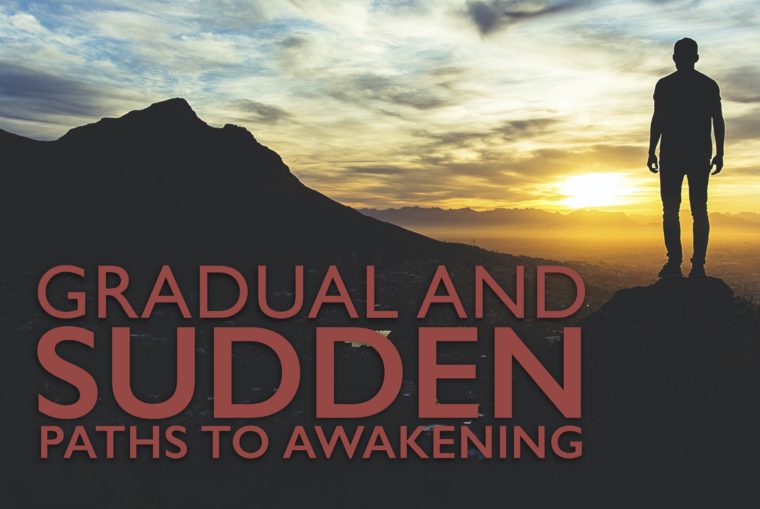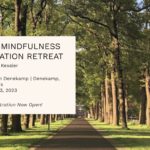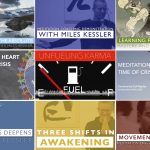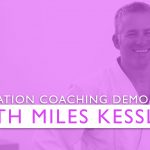If you are a committed meditator then you probably have one of two notions about your practice; either, 1) you are on a path that gradually develops towards awakening, or 2) awakening does not develop because the realization of the Dharma is always, only in the here and now. But which notion is correct?

Buddhism has schools that transmit both of these approaches. Theravada, Mahayana, and Vajrayana are full of gradual and sudden path practices. However, the different approaches to awakening can, at times, create confusion. So understanding the differences in both approach and realization can be very clarifying.
PERSPECTIVE MATTERS
Max Plank, one of the founders of quantum physics, discovered that the same phenomena can be experienced as having completely different properties depending on how you looked at it. This discovery led to his famous quote, “when you change the way you look at things, the things you look at change.”
Could our spiritual practice dilemma be solved by merely changing the way we look at things? In other words, does the method of practice determine the way you see and experience spiritual realization, as either a gradual or sudden path of awakening?

GRADUAL AND SUDDEN PATH REALIZATIONS: ZERO OR ONE
The insight meditation teacher Joseph Goldstein once said that all meditative traditions can be boiled down to a simple spiritual formula that equals either “zero”, or “one”. With the “zero” schools propagating the realization of “non-self”, and the “one” schools propagating the realization of “non-duality”.

In other words, since ultimate reality is an absolute state, the realization of this absolute state will either be experienced as non-self or as non-dual. As absolute emptiness or as absolute oneness. As zero, or as one.
So, if the way you experience awakening to ultimate reality is determined by the differences in the practice methods, then what are these different methods?
GRADUAL PATH METHODOLOGIES
Some “gradual path” methodologies are; vipassana, “satipathanna” (4 foundations of mindfulness), the detached observer, neti neti (not this, not this), the witness, the progress of insight, and any practice with developmental stages. These are all “dualistic methodologies” that lead you to the pure dichotomy of observing mind, and experience observed. With no identity of a “self” in between. Like my teacher Sayadaw U Pandita often said, “one mind and one object… all the way to Nibbana”.
For example, there are some Vipassana schools that use the “progress of insight” from the text the “Vissudhi Magga”, or the Path Of Purification. The progress of insight is an inner map of meditation that tracks the developmental journey that gradually progresses through 16 stages of insight knowledge. As the practice progressively moves through these stages you will come to the deep-end stage of “equanimity towards all formations”. From this stage, at some point, the mind will make the jump to the other shore and enter Nibbana, the total cessation of body and mind, and the awakening to absolute non-self.
This “path of purification” is a gradual process of awakening that unfolds over time taking months to years of consistent practice
SUDDEN PATH METHODOLOGIES
“Sudden path” methodologies are quite different. Some examples are; pointing out instructions, spiritual inquiry, who am I? (who is other?), eti eti (this also, this also), Zen, shikantaza (just sitting), koan study, Dzogchen, Satsang, Advaita Vedanta, the simple feeling of being, Big Mind, and some schools of vipassana.
Sudden path methods are non-dualistic in nature. These methods create the conditions in which the self-other dichotomy may collapse into Oneness. A Oneness that has no subject and no objects. These “non-method” methods “point out” the truth that your spiritual nature is always, already here and now. There is nowhere to go, and nothing to do. In fact, any effort to go somewhere or do something is counter-productive and only takes you away from awakening.
When a non-dual shift happens the experience is that there is no self, and there is no other. There is no subject, and there are no objects — only the liberating experience of non-dual Oneness.
TOWARDS A COMPLEMENTARY PRACTICE OF AWAKENING
The fact is, awakening to Spirit Absolute is your birthright. Non-self and non-dual approaches may appear contradictory, but they are not. Rather, they are complementary paths that lead to opposite sides of the same absolute spiritual coin.
It may be very helpful to intentionally choose one approach as your main practice until you gain skill and maturity (ideally with guidance from a suitable teacher). However, it can also be good to complement your practice with some spiritual cross-training.
If you’re practicing non-self approaches, then experiencing the sudden shift into non-duality will relax any unhealthy striving in your practice and give you a liberating taste of the simplicity of being.
If you are practicing non-dual approaches, nothing gives your practice foundation, structure, and orientation like understanding how the stages are unfolding in your practice.
How you practice is your choice. Awakening is the point. Be it gradual awakening, or sudden awakening. The Dharma is a forward-leading path. So let us reflect on the timeless injunction from the Buddha – “ehipassiko” – come and see for yourself.
For the gradual paths of awakening, and the sudden paths of awakening. Ehipassiko… May we all see for ourselves!





Please note: I reserve the right to delete comments that are offensive or off-topic.